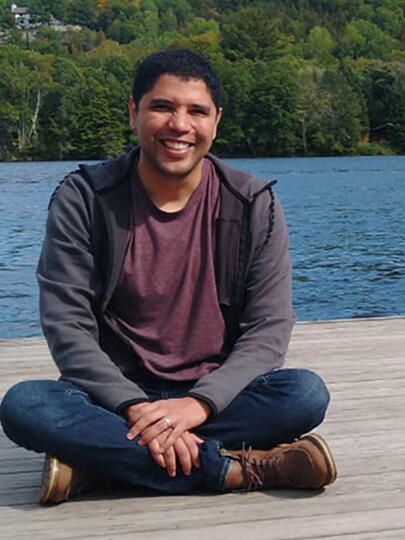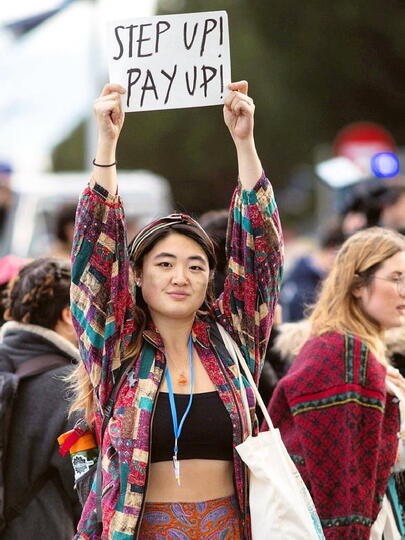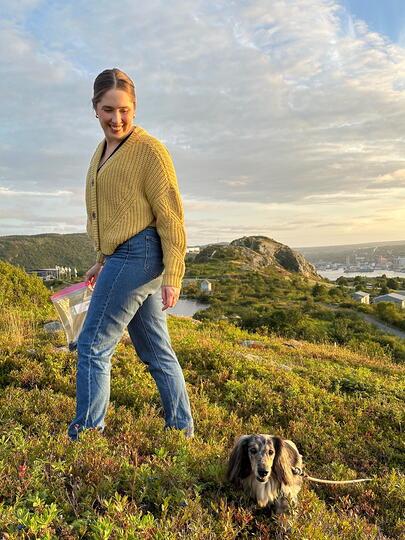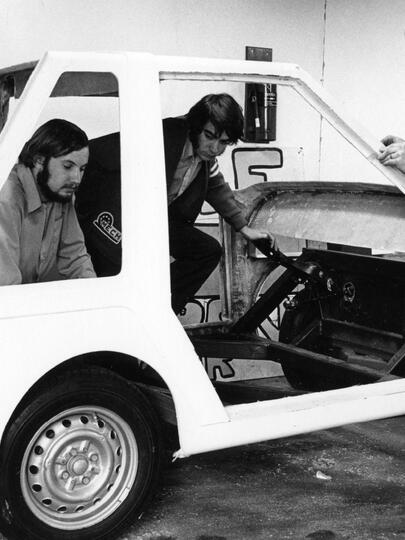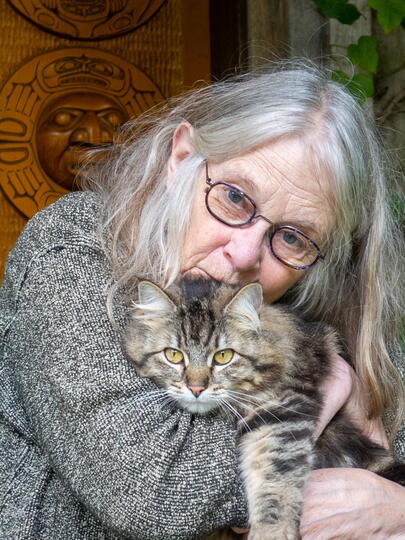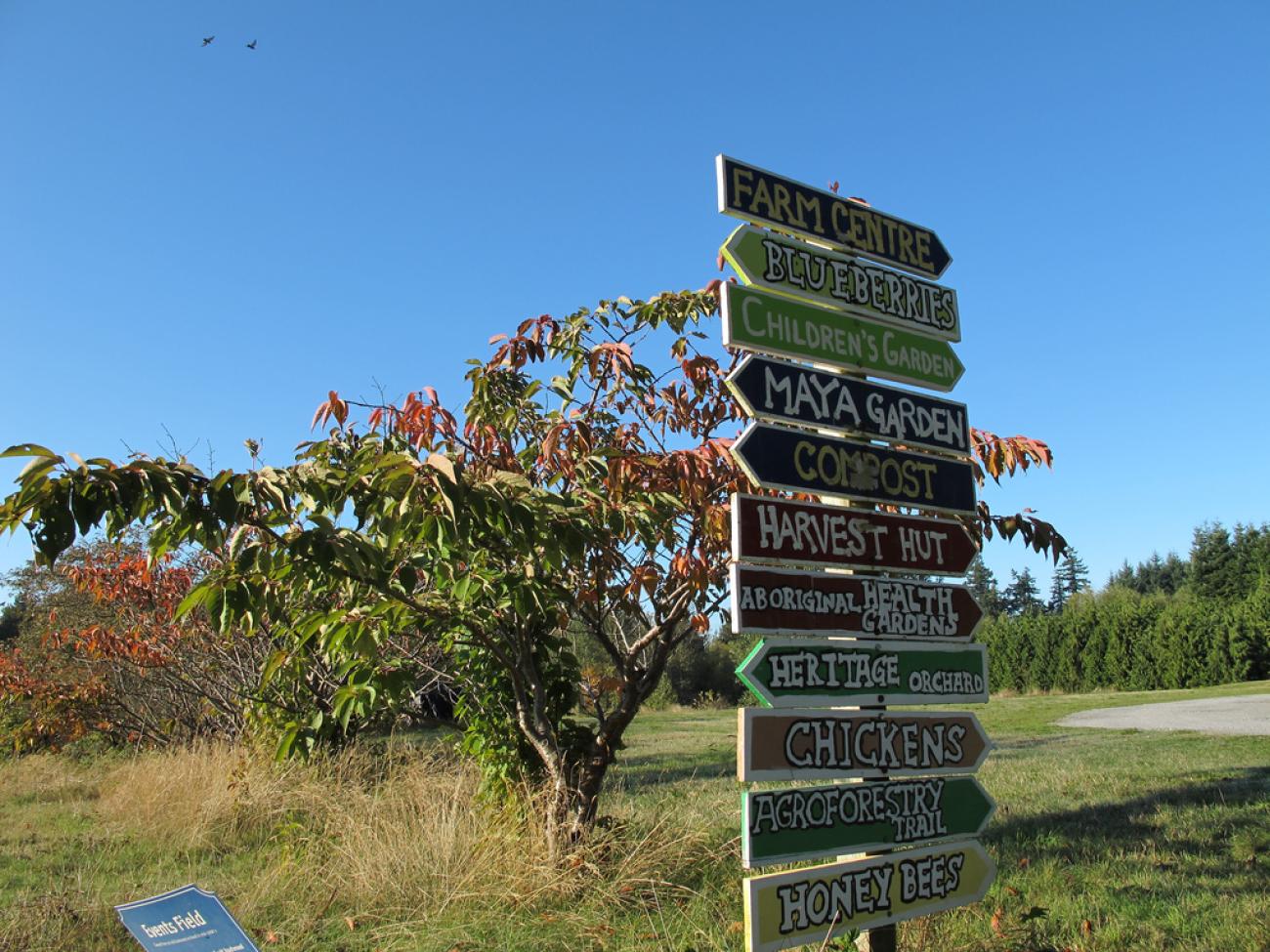Back to the Land
The mid-morning sun is shining high above him, but it’s a crisp fall day and Clarence Webster kneels to add kindling to a fire. Nearby, his friends from the Vancouver Native Health Society are clearing blackberry brambles and harvesting kale, peppermint, and radishes from their garden plots at UBC Farm. They’ll later gather for conversation and warmth around Webster’s fire, which occupies the centre of a talking circle — a traditional venue for open group discussion, originating from Aboriginal prairie cultures.
As Webster watches his friends work the garden and gather food, he is reminded of his early childhood on Vancouver Island’s west coast as a member of the Ahousaht First Nation. He has vibrant memories of family meals and speaks fondly of the fresh seafood bounty his relatives would catch and prepare. “We had everything on the beach at home when the tide was out,” he says. His relatives would smoke salmon and other fish, and he remembers special harvests of oysters and clams. “After Christmas dinners, we'd go out, get a tub of oysters, a sack of clams, and have that for New Year's instead of a turkey,” he says. “It's amazing what good food does. It brings everybody together.”
Those family traditions were abruptly stripped away when Webster was six years old and mandated by the federal government to leave his home and attend the Christie Indian Residential School near Tofino, BC. Webster was one of 150,000 Aboriginal, Inuit, and Metis children forced into Canada’s residential school system, an educational system operated by the federal government’s Department of Indian Affairs and run by churches from the 1840s to 1996. The system was founded on the belief that Aboriginal people would be unable to adapt to a changing world without full assimilation into Canadian society.
Residential schools stripped Aboriginal children of their families, their ancestral languages, and their faith, replacing them with a strict English-French language policy and mandatory adaptation to Christian values. It was a disastrous assimilation effort that featured numerous human rights violations, including abuse and substandard living conditions. The legacy of mistreatment in residential schools resulted in generations of people who, upon leaving school, found themselves traumatized by the experience and largely unable to apply their ineffective education to a workable adult life in their home communities or beyond.
Residential schools stripped Aboriginal children of their families, their ancestral languages, and their faith, replacing them with a strict English-French language policy and mandatory adaptation to Christian values.
Webster lived at Christie for eight years, a period he refers to as “the years of hell.” Now 56, his memories of residential school are still sharp and traumatic. “A lot of kids I went to school with didn’t make it,” he says, explaining that many didn’t live past the age of 20, having dealt with residential school traumas – including physical, mental, and sexual abuse – through drug and alcohol use, which spiralled into fatal addictions.
Along with Aboriginal languages, family ties, and cultural traditions, Webster and his classmates lost their connections with how to access and prepare the foods they grew up with. The food provided at residential school was unhealthy and often unsanitary, he says. It led to widespread malnutrition among students and a host of related health problems. These days, Webster is reclaiming lost parts of his heritage by taking part in the Vancouver Native Health Society Garden Project at UBC Farm.
On Tuesday mornings, he leaves his home in Hastings Sunrise to drive a minivan from the local car co-op to the Aboriginal Friendship Centre in the Downtown Eastside. He picks up a waiting group of volunteers, some of them also residential school survivors, and drives them to the farm, where they spend the day enjoying each other’s company, working their plots, sharing a meal, and learning how to prepare and preserve healthy foods. Today, community kitchen coordinator Liz Isaac is serving a nourishing lunch of meatloaf, scalloped potatoes, and green beans and teaching the group how to pickle beets.
“A lot of kids I went to school with didn’t make it.”
Webster, who has been involved with the farm for three years, has been able to reacquaint himself with traditional food practices, such as smoking fish, and is now the group’s traditional foods coordinator. His experiences at the farm have helped reconnect him to his roots. The tranquility and peace he has found there have paved the way for self-reflection and personal exploration that he hasn’t been able to do anywhere else. “I was in a state of depression. I didn't realize it until I got here,” he says. “There's a lot of friendship here. It's a lot different than downtown or any other parts of the city.”
The garden project is as much about bringing people together as it is about food, says project coordinator Jeannie Parnell. She sees the farm as a place of healing for a community whose right to land has been historically threatened and taken away. Over the past few years, community programs at the only working farm in Vancouver’s city limits have flourished. Garden plots stewarded by the Vancouver Native Health Society — as well as the Institute for Aboriginal Health, the Vancouver Maya community, and the Musqueam Nation — have marked significant steps in addressing and strengthening local Aboriginal food security.
Malnutrition at residential schools left lasting negative impacts on food literacy among Aboriginal communities, says June Sparrow. She and her sister, Denise Sparrow, frequent the farm to harvest vegetables on their Musqueam Nation garden plots. The Sparrows’ parents, both residential school survivors, insisted their children grow up with an abundance of nutritious food their own childhoods lacked. June recalls her parents' account of that time. “For lunch, they gave them a piece of bread with lard on it,” she says. “They gave them cereal in the morning with powdered milk that had maggots in it. And then if they asked for an apple, they couldn't get it. A lot of people there lost their teeth very young.”
"They gave them cereal in the morning with powdered milk that had maggots in it."
While the Sparrow sisters grew up in a family that embraced healthy food as a direct response to poor nutrition at residential school, other families of residential school survivors were less fortunate. Parnell recalls the young Aboriginal mothers she used to work with through Vancouver Coastal Health’s dietary programs. Many of her clients obtained groceries from convenience stores or at the food bank, but few were making healthy choices. “We didn’t learn [about healthy eating] from our mom,” Parnell says. “Our moms went to residential schools and they weren’t able to teach us that.”
The Vancouver Native Health garden project aims to break the cycle by educating members on healthy food choices, traditional food preparation, and locally grown foods. The community of farm volunteers operates like a family, Parnell says, creating a friendly environment for re-learning. “We get back to the land, get back to growing our own food, get back to our own integrity, our own honour,” she says. “Out here, you’re not in survival mode anymore. You’re living and you’re planning your meal.”








